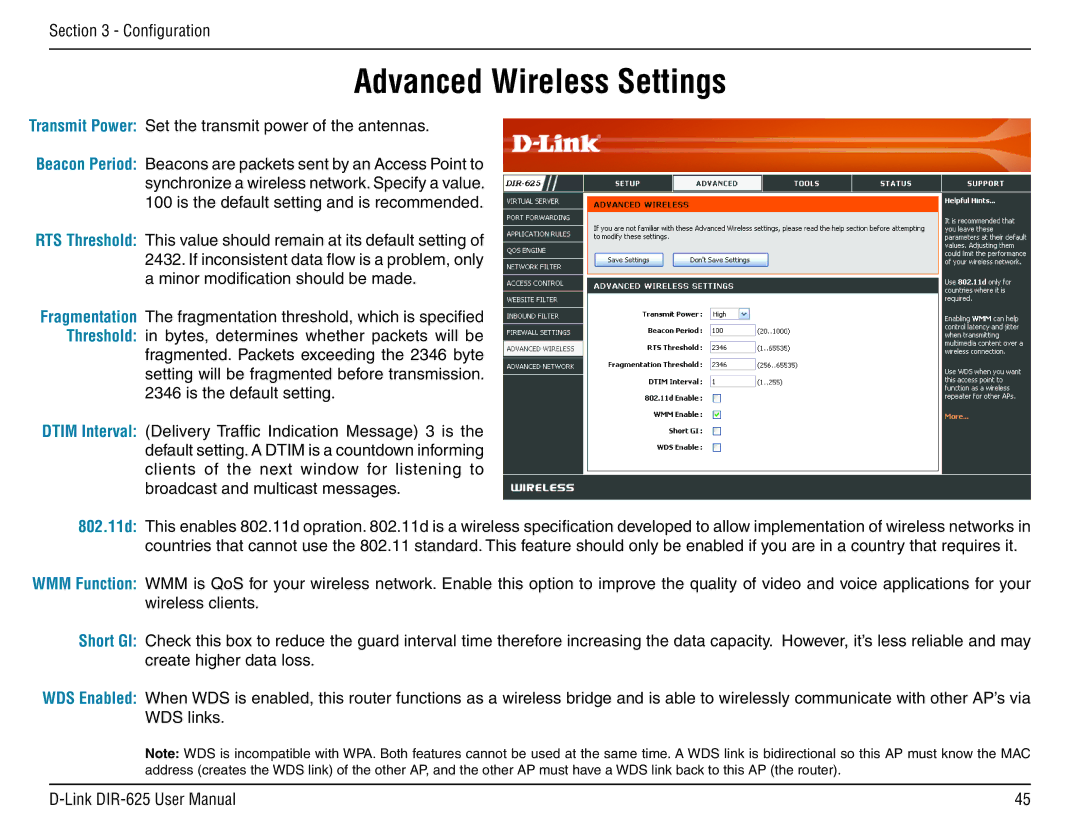
Section 3 - Configuration
Advanced Wireless Settings
Transmit Power
802.11d Mode
WMM Mode
WDS Mode
Transmit Power: Set the transmit power of the antennas.
Beacon Period: Beacons are packets sent by an Access Point to synchronize a wireless network. Specify a value. 100 is the default setting and is recommended.
RTS Threshold: This value should remain at its default setting of 2432. If inconsistent data flow is a problem, only a minor modification should be made.
Fragmentation The fragmentation threshold, which is specified Threshold: in bytes, determines whether packets will be fragmented. Packets exceeding the 2346 byte setting will be fragmented before transmission.
2346 is the default setting.
DTIM Interval: (Delivery Traffic Indication Message) 3 is the default setting. A DTIM is a countdown informing clients of the next window for listening to broadcast and multicast messages.
802.11d: This enables 802.11d opration. 802.11d is a wireless specification developed to allow implementation of wireless networks in countries that cannot use the 802.11 standard. This feature should only be enabled if you are in a country that requires it.
WMM Function: WMM is QoS for your wireless network. Enable this option to improve the quality of video and voice applications for your wireless clients.
Short GI: Check this box to reduce the guard interval time therefore increasing the data capacity. However, it’s less reliable and may create higher data loss.
WDS Enabled: When WDS is enabled, this router functions as a wireless bridge and is able to wirelessly communicate with other AP’s via WDS links.
Note: WDS is incompatible with WPA. Both features cannot be used at the same time. A WDS link is bidirectional so this AP must know the MAC address (creates the WDS link) of the other AP, and the other AP must have a WDS link back to this AP (the router).
45 |
